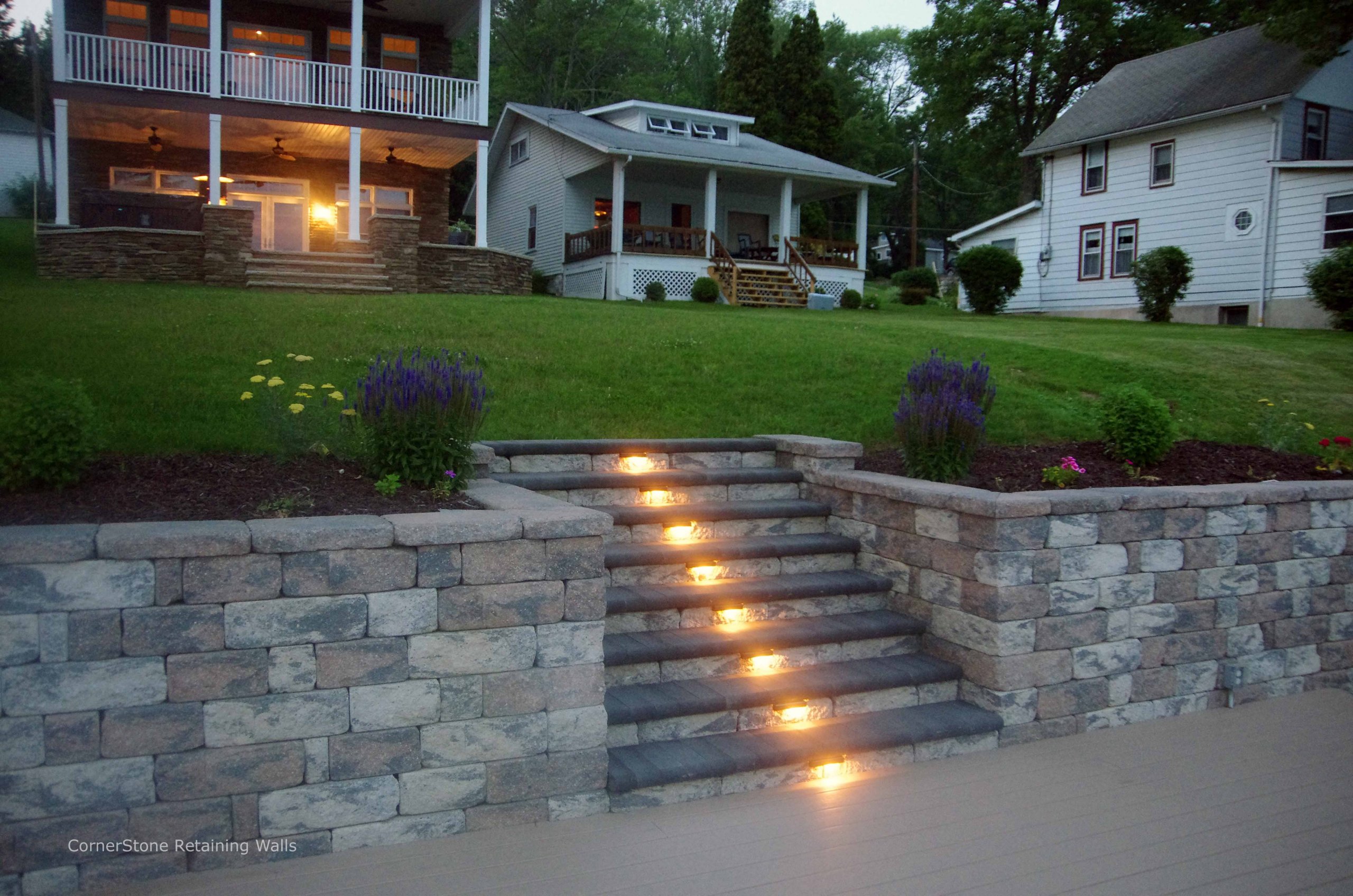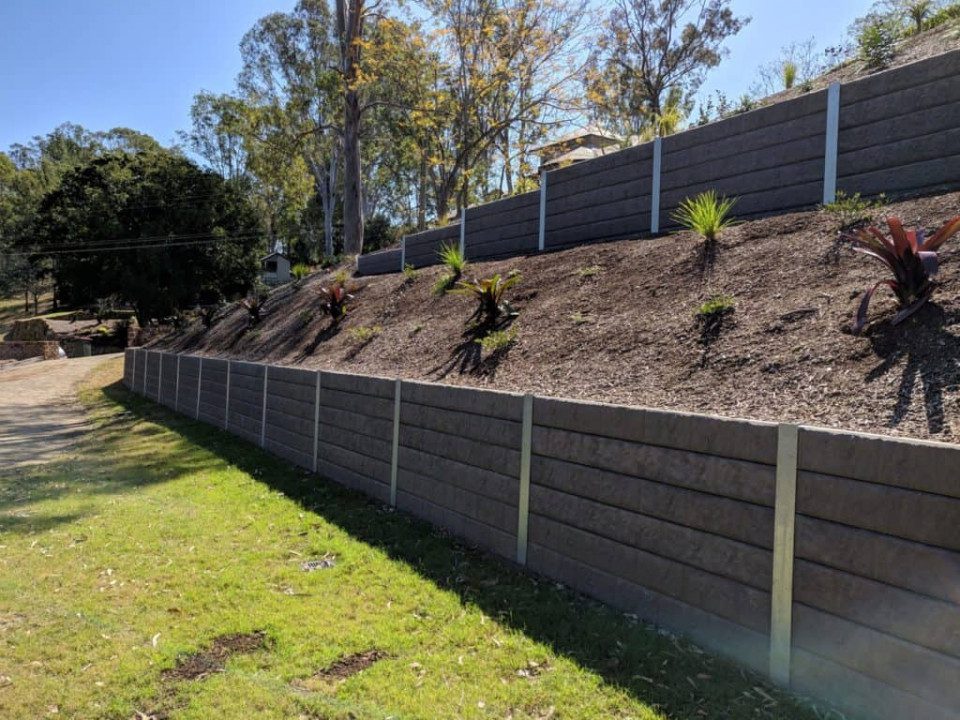Ensuring Structural Integrity: The Significance of Correctly Created Maintaining Wall Surfaces in Preventing Slope Failure
In the world of civil design and construction, the value of appropriately created retaining walls in avoiding slope failure can not be underrated. By exploring the elaborate interplay in between these components, a deeper understanding of the crucial role that keeping walls play in maintaining architectural integrity and stopping slope failing emerges.
Function of Retaining Walls in Stability
The necessity of maintaining wall surfaces in making sure incline security is extremely important in civil design methods. Maintaining wall surfaces serve a vital duty in stopping soil erosion, handling water runoff, and preserving the structural honesty of slopes. By supporting upright or near-vertical quality changes, preserving walls assist to rearrange lateral stress put in by the dirt, thereby minimizing the danger of incline failure.
One secret feature of keeping walls is to neutralize the force of gravity acting on the soil mass behind them. This is attained via proper style and construction, which considers factors such as dirt kind, wall height, drain provisions, and potential additional charge tons. By properly preserving dirt within specified limits, these structures help to support slopes and avoid landslides.
Furthermore, preserving wall surfaces add to the appearances of landscapes while giving useful advantages. They can create terraced levels for landscaping, support highways or structures on hillsides, and enhance the general use of sloped terrain. Essentially, keeping wall surfaces play a vital function in preserving incline security and ensuring the security and durability of civil engineering jobs.
Factors Influencing Wall Effectiveness
Factors that affect the performance of retaining walls consist of soil properties, wall style, and outside tons. Correct wall style takes into consideration variables like wall surface elevation, wall surface kind (e.g., gravity walls, cantilever walls), reinforcement materials, drainage systems, and construction techniques to guarantee the wall can stand up to the lateral pressure exerted by the kept soil. By thinking about these aspects thoroughly, designers can create preserving wall surfaces that efficiently stop slope failure and ensure long-term architectural honesty.
Layout Factors To Consider for Retaining Walls
Incorporating the important aspects of soil properties and external tons right into the architectural design process is important for creating effective maintaining walls that guarantee slope stability. When creating maintaining wall surfaces, designers should carefully examine the qualities of the surrounding soil, including its drain, compaction, and kind residential or commercial properties. Recognizing these soil homes is crucial for establishing the suitable wall surface thickness, elevation, and support required to stand up to the lateral pressure applied by the dirt mass.
Furthermore, external tons such as additional charge loads from close-by frameworks or traffic, along with seismic forces, need to be considered during the style stage. These lots can significantly influence the security and efficiency of a preserving wall surface, demanding the usage of appropriate layout techniques and materials to alleviate prospective failing risks.
Furthermore, the option of ideal materials, such as concrete, stone, or lumber, need to straighten with the site-specific conditions and aesthetic demands. Element of security factors to consider, water drainage stipulations, and building and construction techniques are also important elements that influence the general style and capability of retaining walls in preventing slope failure. By carefully taking into consideration these layout factors to consider, designers can guarantee the architectural honesty and lasting stability of keeping walls.

Construction Best Practices for Sturdiness
When constructing preserving walls for optimal durability and durability, adherence to industry-standard techniques and thorough interest to information are vital. To guarantee the longevity of a maintaining wall, appropriate website preparation is crucial.
Including support strategies, such as geogrids or steel bars, can improve the architectural honesty of the preserving wall surface and protect against potential failings. By adhering to these construction best practices, retaining walls can withstand the examination of time and properly stop incline failing.
Relevance of Correct Upkeep
Routine upkeep is necessary for preserving the structural stability and functionality of maintaining walls over time. To make sure that retaining wall surfaces proceed to perform their desired function successfully, regular evaluations need to be carried out to identify any type of indications of wear and tear.

Final Thought
To conclude, preserving wall surfaces play an essential function in making sure structural honesty and stopping incline failing. By taking into consideration variables affecting wall performance, adhering to create considerations, following construction ideal practices, and carrying out appropriate maintenance, the durability of maintaining walls can be maximized. Retaining Walls Sunshine Coast. It is crucial to recognize the relevance of properly created maintaining walls in preserving stability and stopping prospective hazards associated with incline failure
Elements that affect the efficiency of keeping walls consist of soil properties, wall surface design, and external lots. Appropriate wall look at this site surface style takes into consideration webpage aspects like wall surface elevation, wall surface type (e.g., gravity walls, cantilever wall surfaces), support products, drain systems, and construction methods to make sure the wall can withstand the lateral pressure applied by the preserved soil. By thinking about these elements thoroughly, engineers can build maintaining walls that effectively protect against slope failing and ensure long-term architectural integrity.
Maintenance jobs may consist of removing drainage systems to protect against water accumulation behind the wall, repairing any visible fractures or damage, and making certain that the wall is cost-free from plants that might apply pressure on the framework. By taking into consideration variables affecting wall surface efficiency, sticking to create factors to consider, following building ideal practices, and carrying out correct upkeep, the longevity of keeping wall surfaces can be maximized.